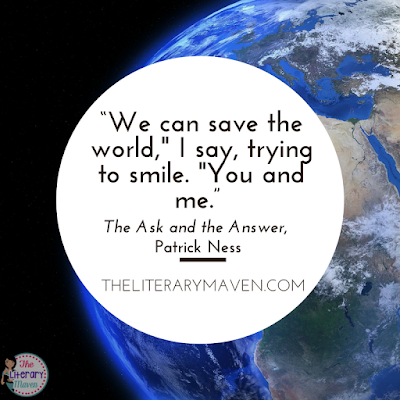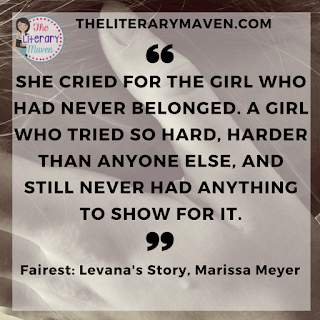The basic plot from Amazon: Picking up several years after the dramatic conclusion of If I Stay, Where She Went continues the story of Adam and Mia, from Adam's point of view. Ever since Mia's decision to stay - but not with him - Adam's career has been on a wonderful trajectory. His album, borne from the anguish and pain of their breakup, has made him a bona fide star. And Mia herself has become a top-rate cellist, playing in some of the finest venues in the world. When their respective paths put them both in New York City at the same time, the result is a single night in which the two reunite - with wholly satisfying results.
Why I liked it: Where She Went is told from Adam's point of view, three years after the accident that nearly killed Mia. I found that I liked this book even better than If I Stay (you can find my review of that here). Adam and Mia are older and more mature, which is perhaps why I found them more likable (after a while in If I Stay, they began to irritate me). Adam is a successful rock star and Mia has just finished Juilliard and is beginning to tour. Both are unhappy. He is anxious, fighting with band mates. She its tired as being treated as if she is fragile.
 I think I also found it easier to connect with Adam the narrator of this book than Mia, the narrator of If I Stay. Adam is still reeling from the abrupt ending of his relationship with Mia, for which she gave no explanation; she just stopped talking to him and wouldn't answer his phone calls, texts, or emails. Adam's situation is one that I think many adolescents, including my former teenage self, can relate to: a relationship that lacks closure and causes emotional instability.
I think I also found it easier to connect with Adam the narrator of this book than Mia, the narrator of If I Stay. Adam is still reeling from the abrupt ending of his relationship with Mia, for which she gave no explanation; she just stopped talking to him and wouldn't answer his phone calls, texts, or emails. Adam's situation is one that I think many adolescents, including my former teenage self, can relate to: a relationship that lacks closure and causes emotional instability.
Classroom application: Like If I Stay, you could add Where She Went to your middle school of high school classroom library. The two novels would make an interesting pairing with other teenage love stories like Eleanor and Park, The Fault in Our Stars, and even Romeo and Juliet.
If you are interested in purchasing a copy of Where She Went for yourself, you can find it on Amazon here.
Note: The Literary Maven is a participant in the Amazon Services LLC Associates Program, an affiliate advertising program designed to provide a means for sites to earn advertising fees by advertising and linking to amazon.com.
Why I liked it: Where She Went is told from Adam's point of view, three years after the accident that nearly killed Mia. I found that I liked this book even better than If I Stay (you can find my review of that here). Adam and Mia are older and more mature, which is perhaps why I found them more likable (after a while in If I Stay, they began to irritate me). Adam is a successful rock star and Mia has just finished Juilliard and is beginning to tour. Both are unhappy. He is anxious, fighting with band mates. She its tired as being treated as if she is fragile.
 I think I also found it easier to connect with Adam the narrator of this book than Mia, the narrator of If I Stay. Adam is still reeling from the abrupt ending of his relationship with Mia, for which she gave no explanation; she just stopped talking to him and wouldn't answer his phone calls, texts, or emails. Adam's situation is one that I think many adolescents, including my former teenage self, can relate to: a relationship that lacks closure and causes emotional instability.
I think I also found it easier to connect with Adam the narrator of this book than Mia, the narrator of If I Stay. Adam is still reeling from the abrupt ending of his relationship with Mia, for which she gave no explanation; she just stopped talking to him and wouldn't answer his phone calls, texts, or emails. Adam's situation is one that I think many adolescents, including my former teenage self, can relate to: a relationship that lacks closure and causes emotional instability.Classroom application: Like If I Stay, you could add Where She Went to your middle school of high school classroom library. The two novels would make an interesting pairing with other teenage love stories like Eleanor and Park, The Fault in Our Stars, and even Romeo and Juliet.
If you are interested in purchasing a copy of Where She Went for yourself, you can find it on Amazon here.

Note: The Literary Maven is a participant in the Amazon Services LLC Associates Program, an affiliate advertising program designed to provide a means for sites to earn advertising fees by advertising and linking to amazon.com.


























